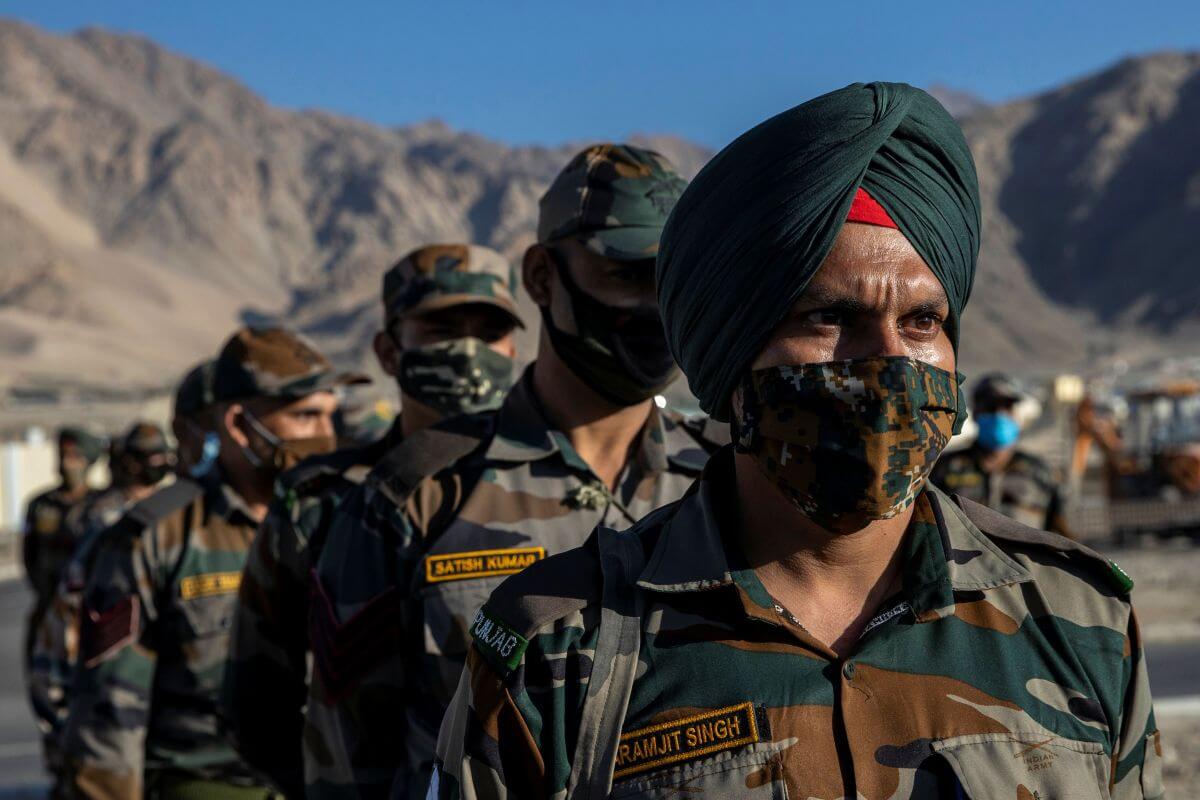India has moved 50,000 troops to its borders with China, marking a historic 40% increase in troop deployment in the region and indicating a shift in its strategy to a more offensive posture. It now brings the total number of troops at the Indo-China border up to 200,000. Over the last few months, India has also deployed fighter jet squadrons to the area.
The move is considered a shift in India’s military policy, since the country has historically focused on deploying troops to its border with Pakistan. Despite being in conflict with China over disputed borders since 1962, the country’s policy has been to merely counter China’s moves. Therefore, the recent large-scale deployment will allow India to adopt the “offensive defence” strategy and actively seize land along the disputed borders. In addition, it also means that a significantly larger number of Indian troops will be acclimatised to engage in combat in the region.
Amid these reports, Defence Minister Rajnath Singh landed in Ladakh on Sunday for a three-day visit, the first such trip by the minister since the Galwan Valley clash in June last year, to check the military preparedness in the region. Addressing the troops on Monday, he said that while India remains committed to resolving the border conflicts through dialogue, it will reciprocate strongly to any provocations and threats.
Meanwhile, reports suggest that China has been shifting its troops from Tibet to the Xinjiang Military Command that patrols the disputed areas in the Himalayan region. The country has also been constructing runway buildings, bunkers, airfields, long-range artillery, and tanks over the past few months. In response to these reports, the Chinese Foreign Ministry refused to “comment on unsubstantiated information.”
In other related developments, during a virtual meeting of the Working Mechanism for Consultation and Coordination on India-China Border Affairs, the countries decided to conduct military-level talks to achieve complete disengagement along the Line of Actual Control. Following the discussions, the Indian Ministry of External Affairs released a statement saying that representatives of both countries vowed to “maintain dialogue and communication through the diplomatic and military mechanisms” to achieve “peace and tranquillity.”
The military manoeuvring is particularly concerning as it could further aggravate the conflict in the region. The former chief of Indian Army’s Northern Command, Lieutenant General DS Hooda, said, “Having so many soldiers on either side is risky when border management protocols have broken down… Both sides are likely to patrol the disputed border aggressively. A small local incident could spiral out of control with unintended consequences.”
After the skirmish in Eastern Ladakh last June, which left 20 Indian soldiers dead, India and China took to diplomatic mud-slinging and blamed each other for instigating the clash after 45 years of peace. However, the recent manoeuvring comes after a period of relative calm between the two Asian powers, indicating a prospective revival in the conflict.

